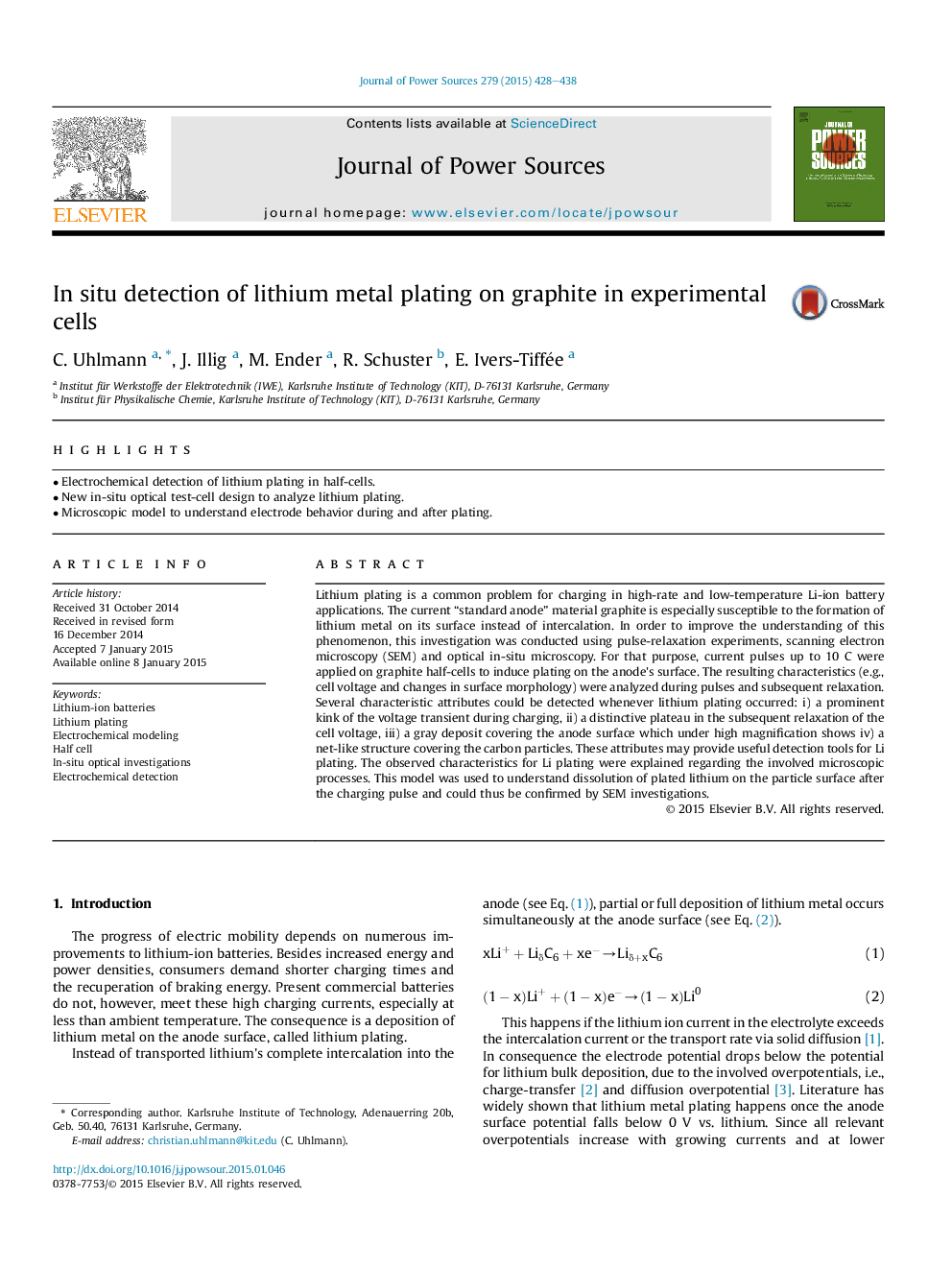| Article ID | Journal | Published Year | Pages | File Type |
|---|---|---|---|---|
| 7733763 | Journal of Power Sources | 2015 | 11 Pages |
Abstract
Lithium plating is a common problem for charging in high-rate and low-temperature Li-ion battery applications. The current “standard anode” material graphite is especially susceptible to the formation of lithium metal on its surface instead of intercalation. In order to improve the understanding of this phenomenon, this investigation was conducted using pulse-relaxation experiments, scanning electron microscopy (SEM) and optical in-situ microscopy. For that purpose, current pulses up to 10Â C were applied on graphite half-cells to induce plating on the anode's surface. The resulting characteristics (e.g., cell voltage and changes in surface morphology) were analyzed during pulses and subsequent relaxation. Several characteristic attributes could be detected whenever lithium plating occurred: i) a prominent kink of the voltage transient during charging, ii) a distinctive plateau in the subsequent relaxation of the cell voltage, iii) a gray deposit covering the anode surface which under high magnification shows iv) a net-like structure covering the carbon particles. These attributes may provide useful detection tools for Li plating. The observed characteristics for Li plating were explained regarding the involved microscopic processes. This model was used to understand dissolution of plated lithium on the particle surface after the charging pulse and could thus be confirmed by SEM investigations.
Keywords
Related Topics
Physical Sciences and Engineering
Chemistry
Electrochemistry
Authors
C. Uhlmann, J. Illig, M. Ender, R. Schuster, E. Ivers-Tiffée,
